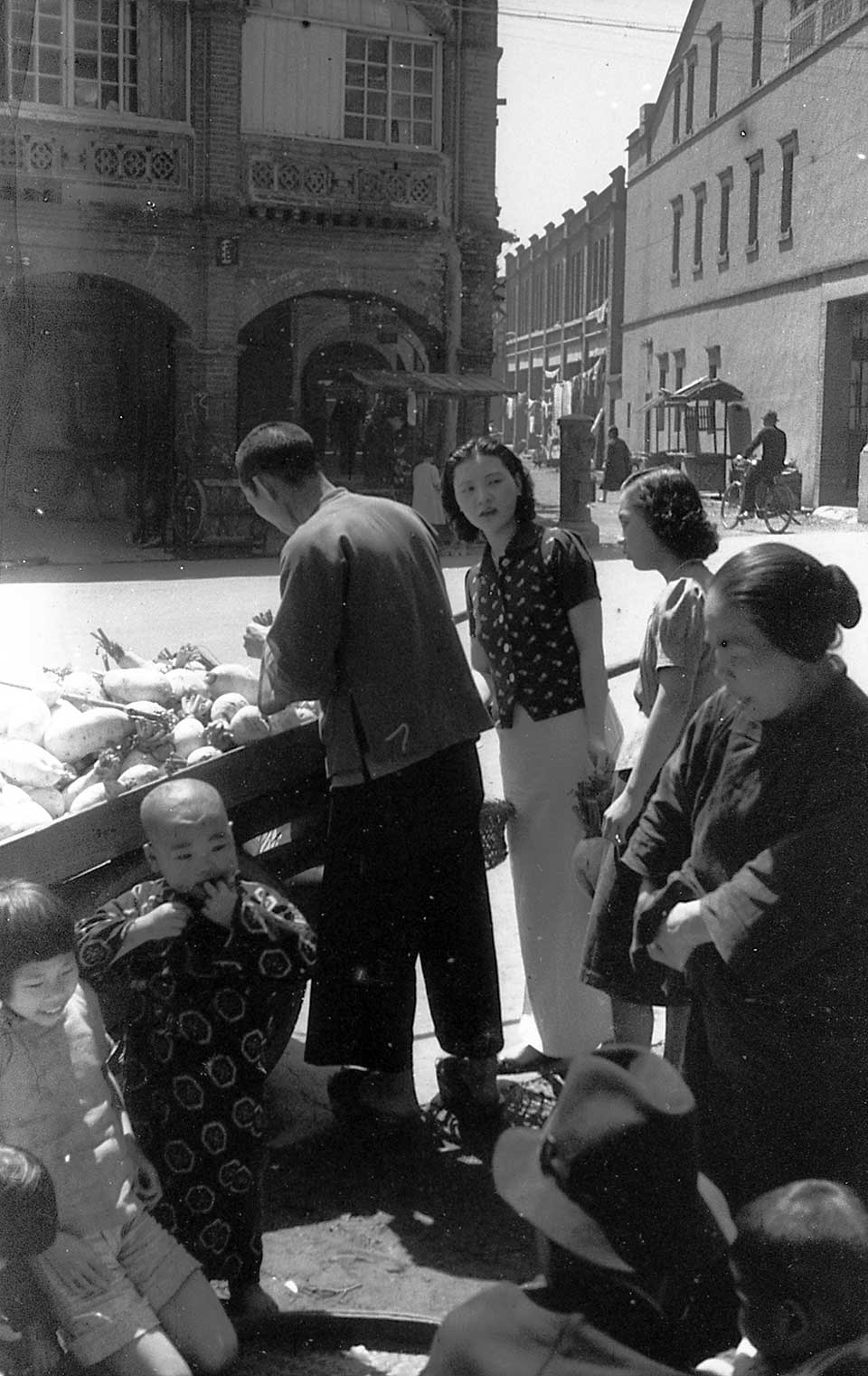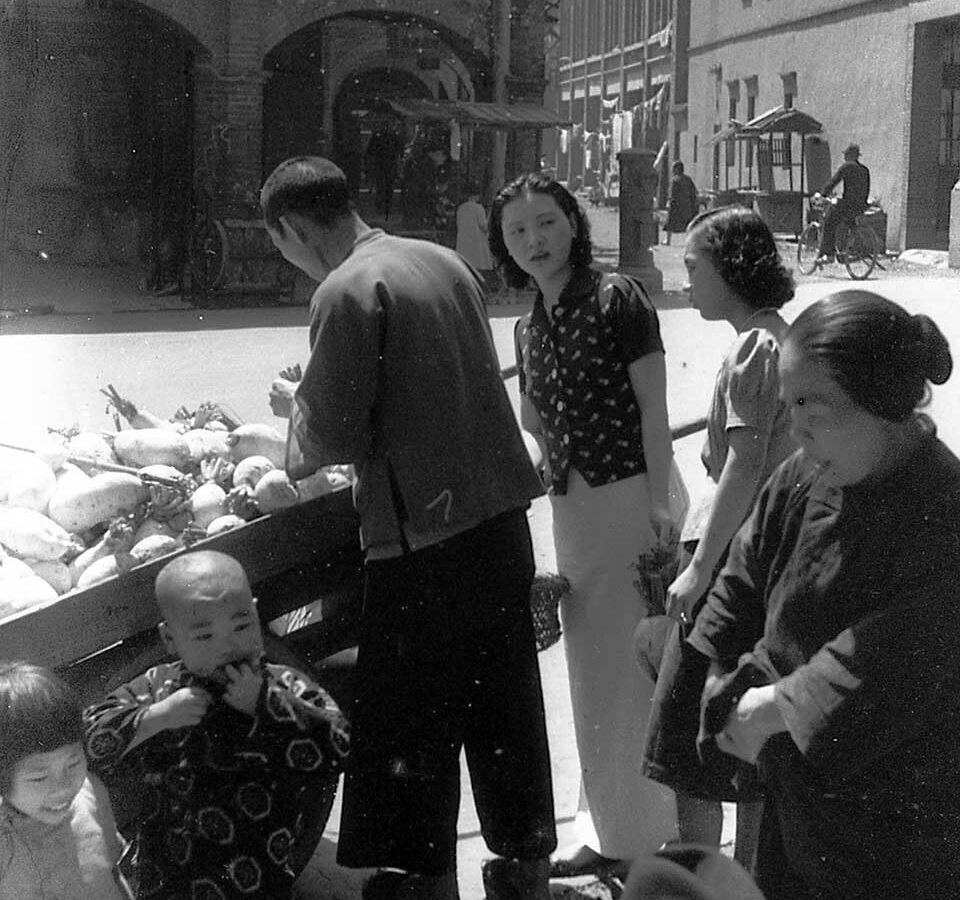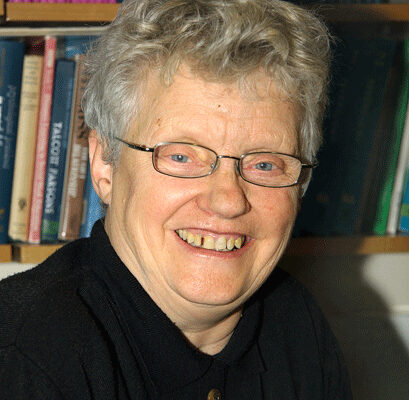
A family shopping in Taihoku in the 1940s: identity and livelihoods depended on kinship networks – Li Huozeng/Wikimedia Commons
In Taiwan, parents of children with learning disabilities were so keen for their offspring to be married that they looked overseas for “foreign brides” for their sons or tried to marry their daughters to “elderly veterans”, according to a Taipei Times report in 2000.
Primary motivating factors were to secure care for their child and to continue the family line, said the article, headed “Marriage among the mentally disabled”.
The context to the news report is what happened after Japan’s defeat at the end of the Second World War. In 1945, the victorious allied forces (Great Britain, the United States and the Soviet Union) entrusted the island of Taiwan to the Republic of China, led by Chiang Kai-Shek.
The subsequent resumption of the Chinese Civil War between nationalist and communist forces on mainland China and the ascendancy of the fortunes of Mao Zedong’s Chinese Communist Party, forced Generalissimo Chiang to evacuate his government to Taiwan in 1949. This made Taipei the Republic of China’s – supposedly temporary – capital.
Displaced soldiers arrive
Chiang brought with him around one million displaced persons, an estimated 600,000 of whom were soldiers. These people and their descendants were known as mainlanders (waishengren) as their ancestral home was not Taiwan.
Although many waishengren were perceived as privileged by the local population as they were part of the ruling power structure in Taiwan, in reality many were hugely disadvantaged.
Many Republic of China army veterans (known as “old taro”) were discharged without pensions or any provision in a country where they were perceived as outsiders. This was at a time when identities and livelihoods were based primarily on family and kinship networks.
Historian Joshua Fan, assistant professor at the University of Texas, calls them the “homeless generation” and highlights that they were not only ethnic but also economic outcasts.
In an effort to put down roots and start families, many old taro looked to marry. This was not easy, as their influx had skewed the ratio of men to women to possibly as much as 3:1.
Moreover, many were impoverished and alienated from mainstream society, and regarded as second-class citizens.
Chinese marriage customs demanded a pin jin (bride price) be paid to the bride’s parents, typically in a range of 8,000-30,000 New Taiwan dollars. To raise such a sum on their paltry pay (around a couple of hundred New Taiwan dollars a month), soldiers needed to save or borrow from their equally cash-strapped comrades.
Unmarriageable daughters, cheap wives
Another option was to find cheaper wives. Some soldiers found such women among the impoverished aboriginal rural communities. For others, there were families who considered their daughters simply unmarriageable, so potential husbands would not have to pay a bride price at all. These women were widows, divorcees, prostitutes and also those with physical and learning disabilities.
One veteran brutally described “compromise marriages”, such as his own, using the dehumanising metaphor of “picking up rotten oranges from the bottom of the barrel that no one else wants”.
Another described being tricked after he was introduced to a woman then married to her younger sister who had learning disabilities. Although he was angry, he conceded that he was at least married and this was “good enough”.
Families were happy to see their learning-disabled members married off due in part to a desire for grandchildren but also because care for relatives was a family responsibility under the Civil Code.
Even today, an estimated 90% of the 100,000 people with learning disabilities in Taiwan still live with their original families.
The Disability Act of 1980 provided services and financial support to Taiwanese people with learning disabilities but, before that, there was no support. With marriage, caring responsibilities passed from the family to the husband.
From marriage to institution
This was the case with Jenny, now in her 60s, whose story is told by Yueh-Ching Chou (2020); only her first name is given. Her grandmother had married her to an old taro in the hope they would start a family and he could become Jenny’s carer.
However, the marriage was a case of “old husband, young wife”, fairly typical for this type of arrangement, and Jenny’s husband died when she was around 30 years old. She was then sent to an institution.
Until 2000, institutions requested that residents were sterilised, but decisions to sterilise were typically made by relatives. Jenny’s grandmother decided to sterilise her after she had borne two children, both of whom were sent for adoption.
Institutionalisation is on the increase in Taiwan. However, after successful community living reform and social change over the past four decades, there are examples of people living independently, earning enough money to pay their rent and being educated about their rights under the UN Convention on the Rights of Persons with Disabilities.
But older people such as Jenny, her life restricted and regimented, her movements largely dictated by institution staff who residents are encouraged to call “teachers”, remain untouched by such changes.
Further reading: Chou YC. “My life in the institution” and “my life in the community”: policies and practices in Taiwan. In: Jarrett S, Walmsley, J, eds. Intellectual Disability in the Twentieth Century: Transnational Perspectives on People, Policy and Practice. Policy Press; 2021





